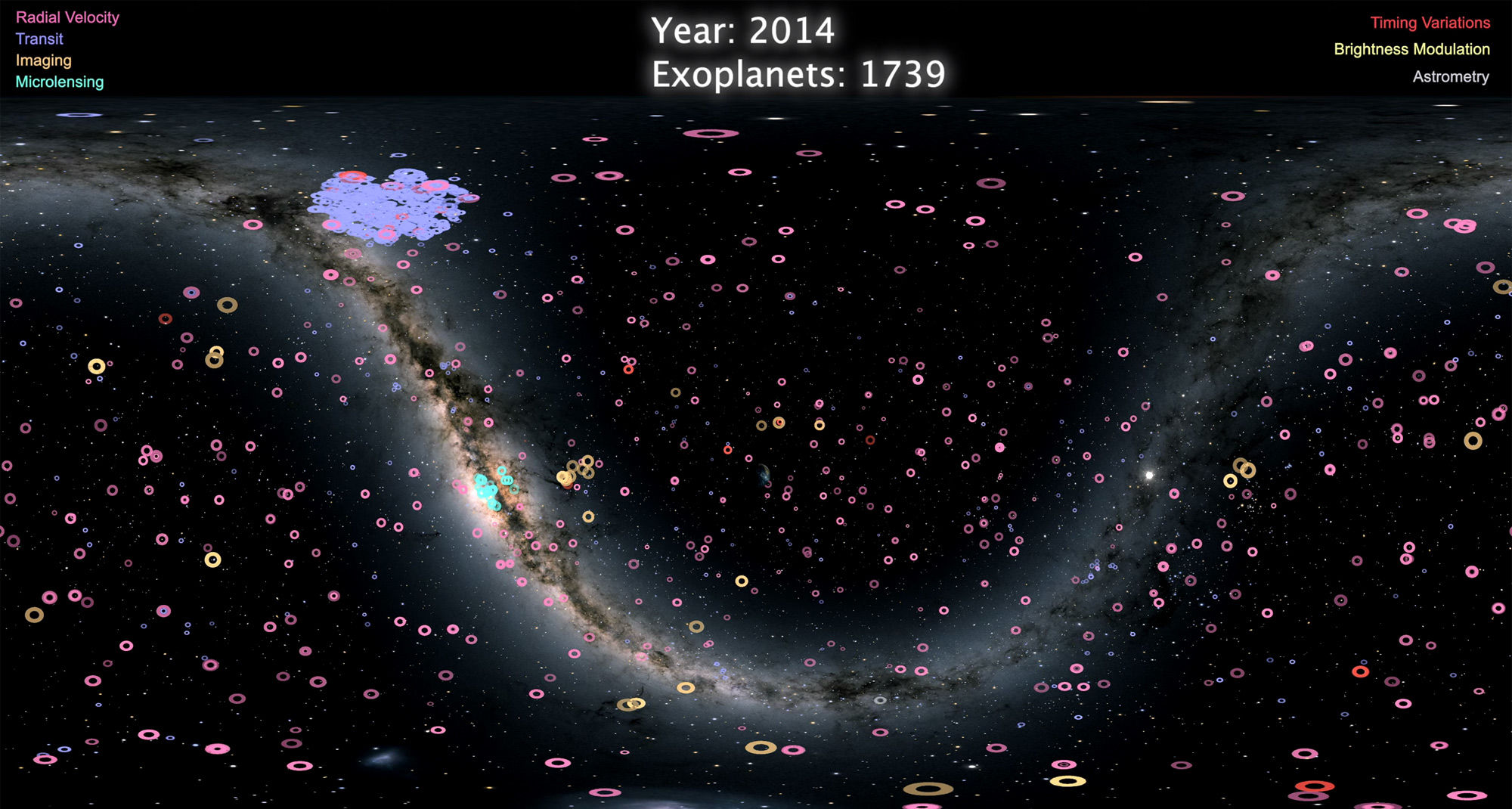Create a free profile to get unlimited access to exclusive videos, sweepstakes, and more!
4000 exoplanets, in sight and sound

In mid-June, the field of exoplanetary astronomy hit a big milestone: The discovery of the 4000th exoplanet.
Wow. That’s a lot of alien worlds!
The very first exoplanet was announced in 1992 (literally immediately after a previous announcement was retracted). At first the pace of discovery was slow, as methods were tried out and refined. But then things picked up considerably.
How much have things accelerated? Well, you can see for yourself… and hear it too.
I just saw that APOD featured an amazing video, created by Matt Russo and Andrew Santaguida of System Sounds. They make wonderful animations about astronomy and space, combining art and science in a fascinating and compelling way.
The video, called 4000 Exoplanets, is just terrific. Watch it, and then I’ll explain…
The video starts off in 1992, at the first announcement of the planets orbiting the pulsar PSR B1257+12. The entire sky is displayed (it’s distorted at the top and bottom due to mapping a spherical surface (we see the sky as the inside of a giant sphere around us) to a rectangle. The curvy band across it is the disk of the Milky Way, the flat spiral galaxy we live in. It is straight when you see it in the sky, but curved like this again due to remapping the sky into a rectangle.
As time goes on, more planets appear. Each time, you hear a piano note. The pitch of the note corresponds to orbital period (the year) of the planet; higher pitches are shorter periods and lower pitches longer periods. The volume of the note shows how many planets with similar periods were announced at that time. One planet is a quiet note, while many together makes for a louder note.
The colors represent how the planet was found. Planets found using the transit method are purple, planets found via radial velocity are pink, direct imaging (literally, images of the planets themselves) in orange, gravitational microlensing in cyan, orbital brightness modulation (where the gravity of the planet changes the shape of the star, which can be detected as a change in the brightness of the star) in yellow, transit timing variations (changes in a planet’s period due to the gravitational influence of another planet in the system, for example) in red, and astrometry (the gravity of the planet making the star’s motion through space wiggle as it orbits) in gray.
Now let me ask you a question: Can you figure out when the Kepler space telescope came online, and where it was pointed?
OK, spoilers: It started finding planets in 2009, and it spent years staring at one spot in space in the constellation Cygnus, which in the video is in the Milky Way to the upper left. By the end of the primary mission it had found about half of all exoplanets known! That’s pretty obvious in the video.
But now we have TESS scanning the skies, and it’s already reaping rewards… and astronomers going through its observations have found only a tiny fraction of the planets predicted to be waiting in the data.
It took 27 years to get to 4,000 exoplanets. We won’t have to wait nearly that long to reach 8,000.
What planets still await us? What strange new worlds are still out there to be found, big ones, small ones, hot one, cold ones, ones with just the right amount of light from their stars and just the right chemistry to be hauntingly familiar to us, ones with liquid water on their surface and nitrogen-oxygen atmospheres, ones with curious features in their spectra that could be from starlight absorbed by the output of living creatures?
There are a lot of planets out there. Billions. Hundreds of billions.
4,000 is just the very, very first start.


























